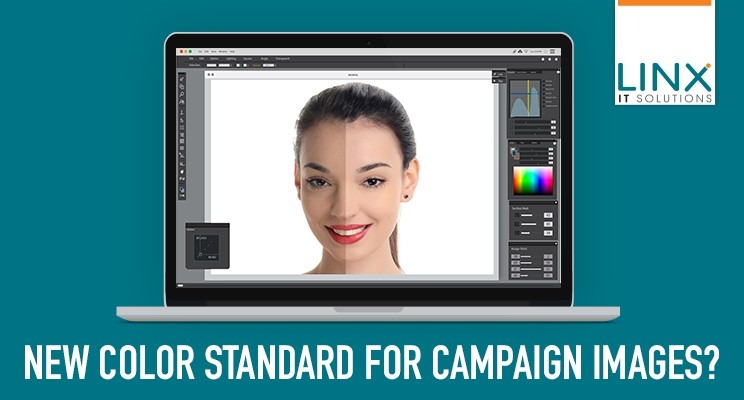There are good reasons why different ISO standards are used for image reproduction. In order to obtain the optimum, uniform image reproduction in different forms of media, each image is converted specifically for that application.
At Linx, we follow the principle that if the images are used for about 30% or more in printed media, the source file should be based on CMYK. At the point when use in online media or screens becomes the standard, Adobe RGB is the logical source.
This is where the problems start. The gamuts of these colour systems are so different that loss of brilliance occurs when converting from RGB to CMYK.
These days, FOGRA39 (ISOCoated_v2) is the most widely used CMYK colour space for data exchange between design and printer. But is this still the best choice today?
Here are some reasons why not:
- FOGRA39 is based on offset printing on a yellowish coated paper (limited presence of optical brighteners). The current generation of paper types are much more fluorescent
- Many digital printing processes can reproduce colours that come outside the FOGRA39 gamut.
- The new generation of spectrophotometers can measure without a UV filter so that paper with optical brighteners is simulated better. FOGRA 39 is measured with the older generation of meters with UV filter.
One of the new colour profiles – FOGRA51 – is intended for offset printing on coated paper with optical brighteners, measured with the new generation of spectrophotometers. So this is, in fact, the successor to FOGRA39.
CMYK Exchange Colour Space
But FOGRA – the authoritative German research institute for media technology – has also launched the FOGRA53 standard in collaboration with GMG. This is based on the largest possible CMYK colour space on the market and is intended as a print colour space for data exchange and communication. Printers that receive FOGRA53 data must convert these further for their own printing process. It is therefore recommended that, before sending files to a printer and/or printing company in FOGRA53, you first find out whether the supplier can handle them.
In view of the fact that the new FOGRA53 standard uses an enlarged colour space, it is also very useful as a ‘best alternative’ for media-neutral storage of campaign images. If FOGRA53 is converted to sRGB for using images on online media, you benefit from the larger colour space that has more similarities with sRGB. When converting to FOGRA51 or FOGRA39 for offset printing in CMYK, there will be less loss than when converting from Adobe RGB.
Our sister company Edge Company is one of the first pre-media companies in the Netherlands to be ISO certified for the new FOGRA51/52 standard. Together with Edge we have performed a number of tests to check whether this is the time to base media-neutral stored images on the FOGRA53 CMYK Colour Exchange Profile.
This article will be accompanied with a captivating image that shows off the larger colour space.
We recommend using the larger colour space that FOGRA53 offers. It will have no negative effects for reproduction in print, and will produce better results in online applications. And in view of the current importance of online communication and the fact that its amount usually exceeds that of print, this seems to be a justifiable choice.
